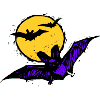Wildlife Disease and Zoonotics

Zoonotics and Wildlife Disease: Publications
Document Type
Article
Date of this Version
2014
Citation
G. Gordh and S. McKirdy (eds.), The Handbook of Plant Biosecurity, DOI 10.1007/978-94-007-7365-3_16,
Abstract
Asian Longhorned Beetle (ALB), Anoplophora glabripennis (Motschulsky) (Coleoptera; Cerambycidae), is an invasive beetle that attacks and kills living and stressed host trees. Throughout the USA, ALB poses a serious economic and environmental threat to city, urban, rural and forested areas. ALB has an impact on the people and industries that depend on these natural resources and the environment in which they live. The woodborer attacks 13 genera of hardwood tree species in the USA. Preferred hosts include Acer spp. (maple, boxelder), Betula spp. (birch), Ulmus spp. (elm), Salix spp. (willow), and Aesculus spp. (horsechestnut, buckeye). In 2009, the United States Forest Service (USFS) estimated that throughout the USA about 169 million acres of forested habitat with maple species is vulnerable to attack from ALB. The estimated maximum potential national urban impact of ALB is a loss of 34.9 % of total canopy cover, 30.3 % tree mortality (1.2 billion trees) and value loss of $669 billion USD (Nowak et al. 2001). Given the range of affected species, other potential adverse impacts include the forest products industry (lumber and furniture), nursery stock industry, maple syrup production, and fall-foliage tourism. Loss of trees also decreases property values, causes aesthetic damage, and lessens the environmental benefits of trees. Potential environmental impacts would be wide-ranging and not restricted to the loss of host trees. Negative impacts to soil and water quality will occur, as well as impacts to fish and wildlife, including threatened and endangered species that depend on host trees. The loss of ecological function related to host-tree loss would also impact natural resource management activities and add an additional stressor to forests that are already impacted due to other manmade and natural factors. The beetle potentially can alter the ecological diversity of the natural forests in North America. (http://www.fs.fed.us/foresthealth/ technology/invasives_anoplophoraglabripennis_riskmaps.shtml) In 2010, USDA APHIS began a multiyear cooperative agreement with Pennsylvania State University and the Cary Institute of Ecosystem Studies to determine the potential ecological and economic impacts of ALB invasions in the northeast USA Forests, providing no eradication or management actions occur. Results show that 45 % of the adult trees in eastern USA forests are at risk for ALB infestation (current USA ALB host list), including maples (sugar and red maples), birches, poplar, and elms. Red maple and sugar maple are the two most abundant tree species in the eastern USA (all states from Minnesota south to Louisiana and eastward). Sugar maple is an ecologically important species in late successional and old growth forests. Red maple occurs across a range of environments from ridge tops to swamps. Both species are distributed throughout the eastern USA. Virtually all individuals of preferred host trees are expected to die within 10–20 years following ALB invasion of a stand. Loss of preferred tree species triggers replacement by non-preferred tree species. However, in many regions of the USA, species that are expected to replace the species at risk from ALB are themselves threatened by other introduced pests and/or pathogens, such as Beech Bark Disease and Hemlock Woolly Adelgid (Adelges tsugae (Annand)). The net effect is the significant reduction of the merchantable volume of timber in eastern forests over at least the next 50 years. Based on the assumption that the outbreak occurs everywhere at the same time, the apex of the outbreak is estimated at year 25 when over 71 billion board-feet are anticipated to be killed by ALB throughout the study region. Over 100 years, about 850 billion feet are expected to be killed by ALB in the region. Reduction in timber volume is mirrored in reductions in carbon storage and represents a significant reduction in the strength of the sink for CO2 in eastern forests. (Canham, Jacobson, 2012, personal communication). On several occasions during the 1980s and 1990s, ALB was intercepted at ports of entry in solid wood packing materials (SWPM) as part of international commerce. The first established population of ALB was discovered in New York City (1996) and then in Chicago (1998). Subsequently, ALB has been found in New Jersey near New York City (2002), Middlesex/Union Counties New Jersey (2004), Worcester, Massachusetts (2008), and Boston, MA (2010), and recently in Bethel, OH (2011). On March 9, 1999, the US Secretary of Agriculture officially declared the discovery of ALB an emergency, paving the way to obtain funding to address the SWPM pathway and contain and control the outbreaks, and eradicate the ALB wherever it may be found in the USA. Potential losses from an unchecked outbreak are high. However, eradication is possible given the biology of ALB, current extent of infestation, and available treatment options. Compared with other forest insect pests, such as Emerald Ash Borer (Agrilus planipennis Fairmaire), ALB has a low reproduction rate and does not naturally disperse long distances. Current infestation areas in the USA are also comparatively small, and effective control techniques are available. However, they are costly and involve destruction of infested trees and chemical treatment of exposed host trees. Eradication efforts have been successful in Illinois and New Jersey and certain areas of New York. Similar results are expected within several years in other areas of New York where USDA APHIS eradication efforts are underway. Successful eradication depends on many factors including strong stakeholder support and sufficient resources to carry out effective eradication efforts. Here we report on the ALB cooperative eradication national program with a focus on the key elements in the successful eradication programthat centered in Chicago, Illinois during 1998 to 2008. Eradication efforts continue to make progress in New York, Massachusetts and Ohio


Comments
This article is a U.S. government work, and is not subject to copyright in the United States.